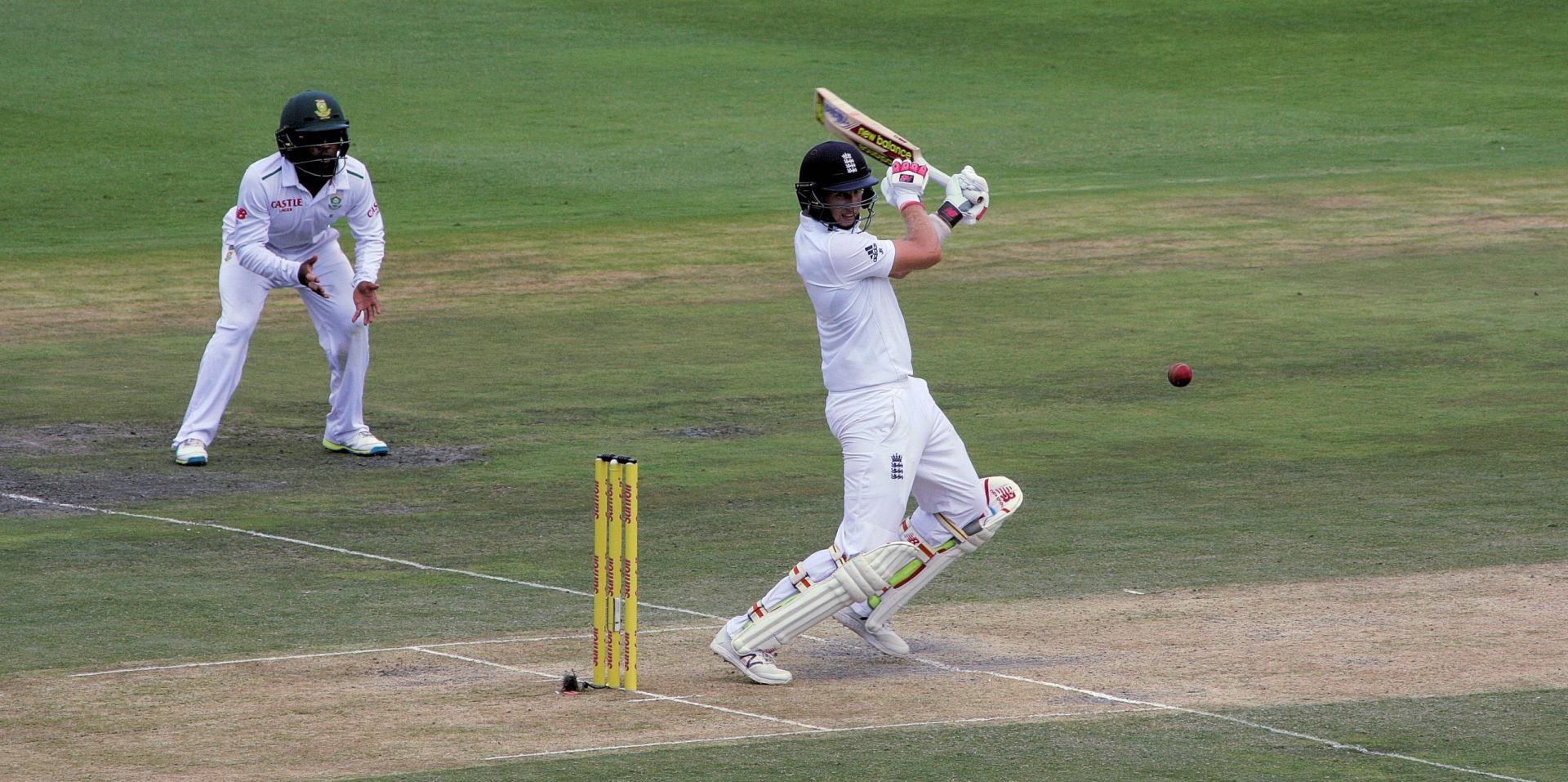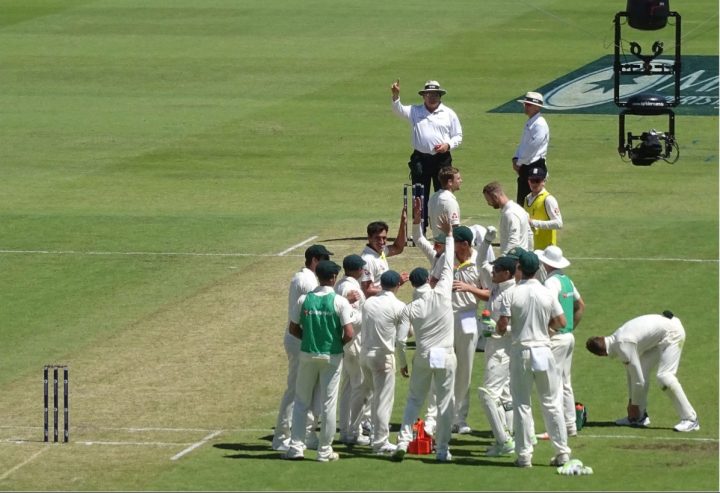I wasn’t sure whether to add a question mark to the end of this headline or not. After all, there’s no doubt that England’s Test side have looked like a completely different outfit, playing extremely positive cricket, under Brendon McCullum thus far. The transformation has been nothing short of remarkable. And I say this as a grumpy old cynic, worn down by decades of false dawns, who usually regards hyperbole as a modern-day plague. Give me half an opportunity to look at life through a jaundiced lens and l’ll normally bite your hand off.
However, there’s really nothing negative to say after the first four Tests of the summer. It’s almost as if the England players have been buoyed by the departure of Tom Harrison and the arrival (or impending arrival) of several new faces at the ECB and decided, very belatedly, to pull their collective fingers out. Or maybe, just maybe, we’ve finally hired a coach that the players like, respect, and listen to. Brendon McCullum certainly seems to have inspired them.
Yes, there are caveats. For starters, I don’t buy into ‘BazBall’ as a concept. And neither, incidentally, does McCullum himself. After all, Brendon McCullum is far too smart – much smarter than many pundits, I might add – to arrogantly believe that he can reinvent Test cricket. The truth is that playing positively isn’t particularly revolutionary. Nor is it likely to be sustainable long-term as Test matches are played in all kinds of conditions around the world and against all types of bowling. Occasionally, or even frequently, the bowlers will be on top. And if England try to play like that against Ravi Ashwin on a Bangalore Bunsen, or Pat Cummins at Brisbane, then we’ll probably get bowled out within 20 overs. And I think McCullum knows that.
Baz is also probably aware that the philosophy attributed to him is pretty much the same as the one that Trevor Bayliss tried to install with very mixed results. Remember when Jason Roy was told to attack the new ball in the Ashes and Jos Buttler was recalled to play the kind of innings that Bairstow is now playing with regularity? It won’t always work. The history of the game, which is evolving but hasn’t changed dramatically, proves that. There have always been three ways of playing: attack, defend (sit in), or play the situation. And the best teams tend to do the latter. I’m sure that, in time, McCullum’s England will try to do the same. Although McCullum was an aggressive cricketer himself, he was very much capable of dropping anchor when required. He wasn’t a one-trick pony.
What we’ve seen this summer, in my eyes, can be explained very simply: England have capitalised on four unusually excellent 4th innings batting pitches which have remained remarkably true, and offered precious little spin, swing, seam movement, or indeed variable bounce, for all 5 days. We’ve still needed to play bloody well, of course, but the run chases on all four occasions have been achieved by two batsmen in the form of their lives: Joe Root and Jonny Bairstow. Basically, all the stars aligned to make ‘BazBall’ possible. It’s made for some spectacular cricket, which will temporarily breathe new life into Test cricket, but it’s unrealistic for an all-out attack philosophy to succeed every time. And would we want it to anyway? Test cricket is so glorious precisely because of its variety. The game would be poorer if we see a succession of great batting pitches turning Test run-chases into something resembling white ball run-chases. Low-scoring games, or ones where a team is clinging on for survival, are often the most entertaining.
What’s more, the four run chases (with the exception of Ben Foakes’ cameo alongside Root against New Zealand, and Alex Lees and Zak Crawley’s unusually effective opening stand at Headingley) have essentially been two-man efforts. This summer both Joe and Jonny are averaging over 100, with Stokes (thanks to a not out) averaging 42, and the others under 36. This England team still clearly has plenty of holes. But what’s changed, in my opinion, is England’s mental approach.
When I say ‘mental approach’, by the way, I’m not referring to ‘positive’ or ‘attacking’ intent, as I believe we’ve always had plenty of cricketers with aggressive intent. Instead, I’m referring to a sense of liberation; a sense of enjoyment; a sense that the players are enjoying one another’s company; and a sense that there are obviously far more important things in life than a cricket game. Ben Stokes hasn’t stopped smiling this summer. And his team have played with a carefree as well as pugnacious attitude. The hangdog expressions have finally vanished and the players are playing with some joie de vivre. Fair play to them.
At the end of the day, it’s an elite cricket coach’s job to create an environment in which talent can express itself. And so far Brendon McCullum seems to be doing very well at this. After watching this interview with Jason Roy, Reece Topley, and Laurie Evans on the Betway Blog, in which they describe the influence of Surrey’s overseas players, I do wonder whether McCullum is performing a similar role with England. He’s not playing personally, of course, but he’s exactly the same kind of wise old head who’s a calming influence on the dressing room. Maybe he’s doing for England what the likes of Kumar Sangakkara and Hashim Alma have done for the Rey.
Ben Stokes has also obviously had an effect as captain. He was always well-liked (not that Joe Root wasn’t) but the players seem to be responding to him as a leader, even if the tactics are still occasionally a bit questionable in the field. The dressing room also seems to have some camaraderie now, much like the Surrey dressing room depicted above, with the players enjoying each other’s company. This has enabled the more introspective characters like Jack Leach, who always lacked confidence under Root and Silverwood, to improve their performances considerably. It’s no wonder that debutants like Jamie Overton and Matt Potts have performed so well, too.
Finally, I wanted to give some credit to Joe Root. It might seem, from the above, that I was suggesting Root’s captaincy was somehow toxic. If so, that’s really not the impression that I wanted to give. His tenure might have got a little stale, especially under Silverwood, but overall I see Root’s influence over the dressing room as overwhelmingly positive. He was the first to congratulate Stokes on his appointment, and was very public in saying that he wished his mate all the best in the role, and I think the runs he’s scored since relinquishing the captaincy suggest that he’s in a happier place without the responsibility. There are clearly no sour grapes as their can often be in such situations. Perhaps this lack of ego, at least amongst the senior batsmen, is helping to create some positive vibes, too?
Personally, I think it’s wonderful that Root is playing so well again. At 31 years old, he should be at his peak right now. Ditto Jonny Bairstow, who’s now 32. It’s also reward for working so hard. I didn’t realise until I watched the video above, which also discusses their England teammates, that Root is the fittest person in the side; therefore he’s more than capable of scoring massive hundreds in back to back Tests. It’s also positive to hear that Ollie Pope is a tremendously hard worker (always last out of the nets) and that his technical work is beginning to pay off. Although I’m still not convinced that Pope is a true No.3 at Test level, a slightly out of his comfort zone Pope is still a better player than the alternatives at this point. Even if he’s apparently a messy so and so. Ahem.
James Morgan









There’s no doubt the players have bought into McCullums playing without fear, but it is a good point that all 4 tests this summer have been played on batting pitches that have hardly deteriorated, allowing Batsmen to feel confident playing shots throughout. All the positive thinking in the world can’t cover up dodgy technique, so it was good to see Bairstow and Crawley playing straighter and leaving more against India. Once Stokes has abandoned his 20-20 charging approach to build an innings we’ll have a decent middle order. He’s a better batsman than his retaking the initiative option. His average, aside of 1 not out innings this summer, is poor and mostly self inflicted. He needs to bat long and pick his moments more carefully. There’s no need for premeditation. The captain leads by the sample so he can’t be seen to throw it away for the sake of a quick 50, largely irrelevant in tests where 50 is the springboard to a big one. He’s not playing as a batsman who bowls, he’s a specialist batsman, so play like one. Buttler had the same problem, but without the technique. It’s easy to get caught up in the ‘entertainment’ factor when we live in a dumbed down age. Forget the increasingly boorish Barmy Army and their fancy dress cohorts, the majority who come to watch tests, still in my experience, find the drama of changes in fortune and the unpredictable nature of every delivery a greater lure than a few sixes here and there, especially with the world’s best on display. Great players, left to their own devices, will usually produce great entertainment. Test cricket is a unique format, don’t water it down.
Agreed. There’s a lot of stuff doing the rounds arguing that England are going to save Test cricket playing this way. It’s reactionary nonsense imho. For starters, Test cricket doesn’t need rescuing in England. It sells out and the majority of the TV deal is based on Test cricket. Secondly, I don’t see how making Test matches longer ODIs, with batsmen on top chasing huge totals, will do any good at all. It would sacrifice Test cricket’s differentiators.
I agree about sacrificing test cricket’s differentiators–if it essentially turns into F450 then we might as well scrap it–but I’m not so sure that tests aren’t in quite big trouble in England except in the short term. How much will the TV rights be worth and how big will the crowds be, regardless of how entertaining England are, if they can’t find any decent opposition because countries are only playing six tests a year and have scrapped their red-ball domestic competitions?! Or have pulled out of a series completely, as with SA today with a ODI series, because it makes more financial sense to prioritise their domestic T20 competition?
On this website, you can buy an online betting id for betting and other types of games in India. and can play all types of sports like football, table tennis, and kabbadi. We also offer tips and tricks to play cricket online. Visit – https://onlinecricketid.com/
bhola betting book is an online betting site where you bet on sports like football, teen patti, cricket etc. and win real money cash. For more info visit – https://247bettingid.com/
Best Online Betting ID in India. Generous rewards. Entertaining & exciting. For all Desktop & mobile. Great events. Amazing Possibilities. fantastic fun. 100% safe. Click here & sign up. https://sbhonlineid.com/